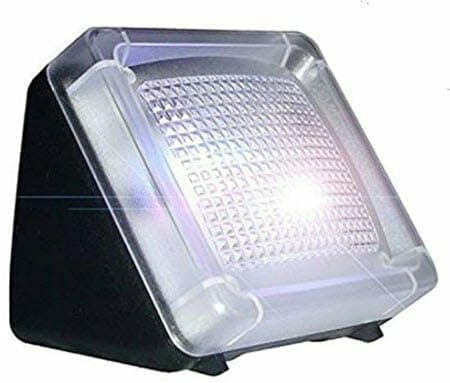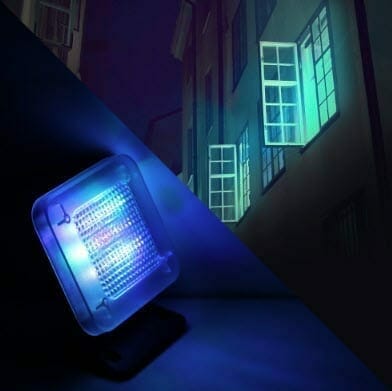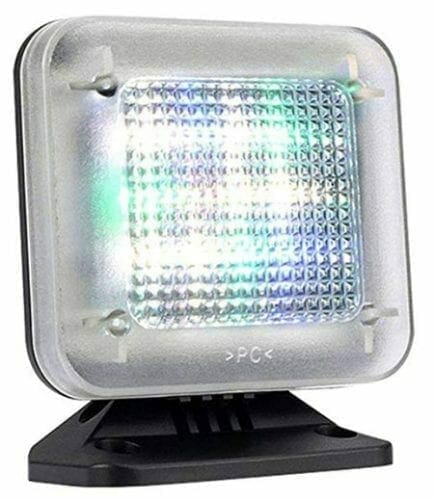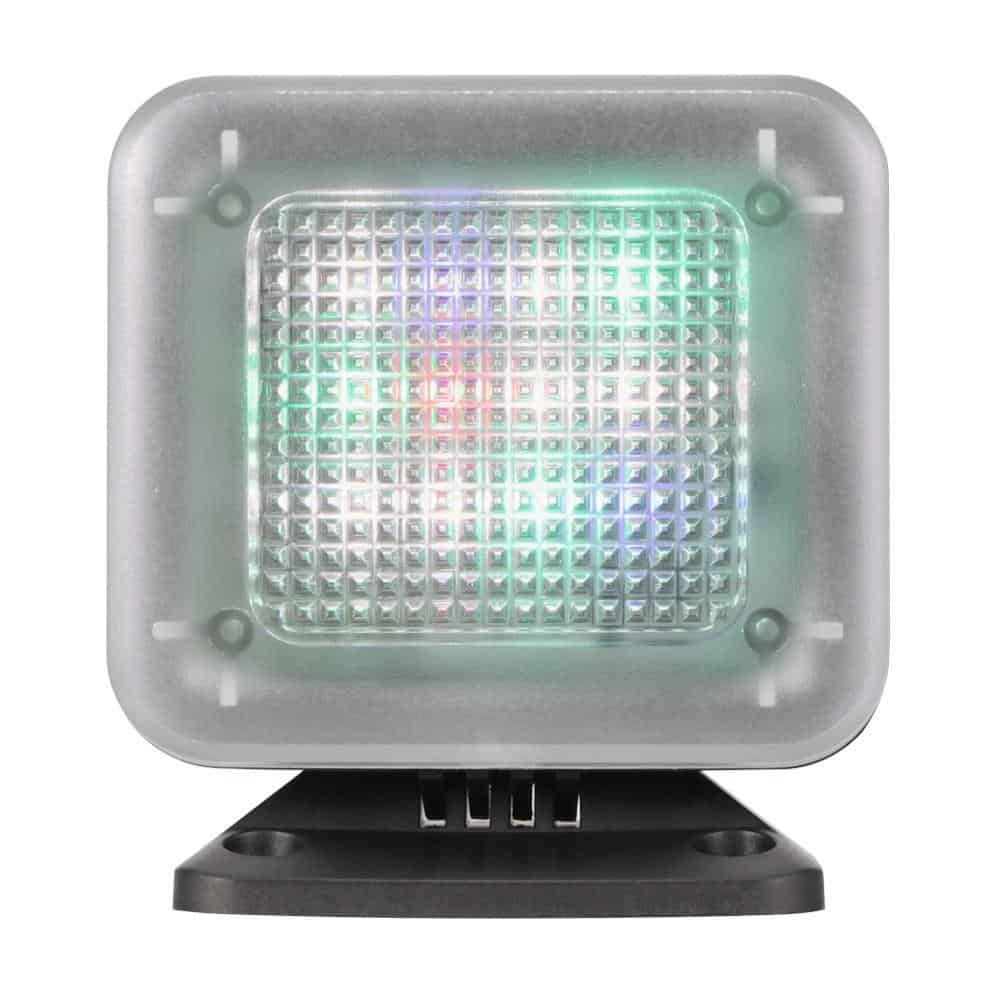
Recently there’s been a shift towards devices that don’t catch thieves but make sure that they don’t even enter your home. These are often unconventional methods, but they work great as deterrents.
One very popular and fairly cheap solution is a fake TV.
A fake TV is a small box emitting lights in a random cadence. If you were to look into your house from the outside, especially at night, you’d see such random lights– they’re usually there because of light emission from your TV set. A fake TV fakes those patterns and leads a thief to believe that there’s someone at home. As we mentioned, they’re cheap, work well, and don’t cost a lot to keep operational.
Here are some general instructions for using a fake TV:
- Plug the fake TV into a wall outlet.
- Set the fake TV’s desired brightness and flickering frequency, if applicable. Some fake TVs have adjustable settings to allow you to customize the appearance of the simulated TV screen.
- Turn the fake TV on. The LEDs or light sources should start flickering to mimic the appearance of a real TV screen.
- Leave the fake TV on when you are not home or sleeping. The fake TV will create the impression that someone is home watching TV, which can deter burglars or other intruders.
- Turn the fake TV off when you are home and watching TV. The fake TV should not replace a real TV, as it will not provide any actual video or audio content.
Don’t Put a Fake Tv in Every Room.

Considering the price of fake TVs, we can understand if you want to put as many as possible in every room. That, though, would be a huge mistake. Yes, we recommend buying more than one, but you have to be reasonable. Let’s be realistic – do you have a TV in every room of your home? Chances are you don’t.
If we were to assume that an experienced burglar is scouting your house, he would probably been looking at it for a few days already. This would help him understand the layout, and he could know what room is where.
TVs are often placed in the living room or bedroom, or sometimes the dining room or kitchen. However, nobody places a TV in the bathroom – it’s common sense. If you have a fake TV in a room, the burglar knows you shouldn’t have a TV, and that might give you up. Just like you know that fake TVs exist, they know too and can use common sense.
The smart thing to do is to consider how many people live in your house. For example, if you’re alone, you wouldn’t have TVs on in the kitchen, living room, and bedroom simultaneously, would you? This is another easy giveaway; make sure you keep it in mind.
Consider the Placement and Orientation.

A fake TV emits light in a single direction – just like a regular TV set might. And if you want to make it seem genuine, your best bet would be to place the fake TV next to your regular one, or where you would put a regular TV if you had one in that room. You might be asking yourself why to buy a fake one when you have the real deal, and the answer to that is simple – you’re saving electricity, and you aren’t unnecessarily wasting your TV set’s life expectancy. It just costs less, both immediately and in the long run.
The direction, or orientation, should be noted as well. If you have a couch, or a bed, from where you’d watch TV if you had one in the room, the fake TV should be turned that way to ensure it’s as authentic as possible. Emitted light should be in the direction of your seating area, not the wall behind the would-be TV.
Another thing while we’re discussing placement, keep it out of sight. This is especially important when you live on the ground floor. If a burglar is scouting your home, he can see what’s inside during the day. Having a fake TV on display will let them know that the TV light doesn’t indicate that you’re at home and, in turn, encourage them to break into your house. You want to avoid this, so be careful.
Don’t Leave It on Continuously.
Just like you don’t leave your TV on continuously, you shouldn’t leave the fake one running 24/7, either. We’re guessing you turn off the TV when you’re sleeping – the same thing should also be done with the fake TV. And yes, this can be done remotely when you’re out of the house. The solution is a smart plug you can control via your phone or voice assistant or a programmable timer plug. Whichever you choose to go for, it will let you turn your fake TV on or off, regardless of whether you’re at home or on the other side of planet Earth.
Wrapping things up
There’s always the unfortunate truth that if a burglar is dead set on breaking into your house, they will most likely do it, regardless of your security systems or deterrents. However, you can still ensure you do your best to prevent it.
Fake TVs are one of the best ways to ensure that a burglar steers clear of your home. But, considering you can still give yourself away with one, you’ll want to keep the things mentioned above in mind to ensure that it does what you’ve bought it for.

